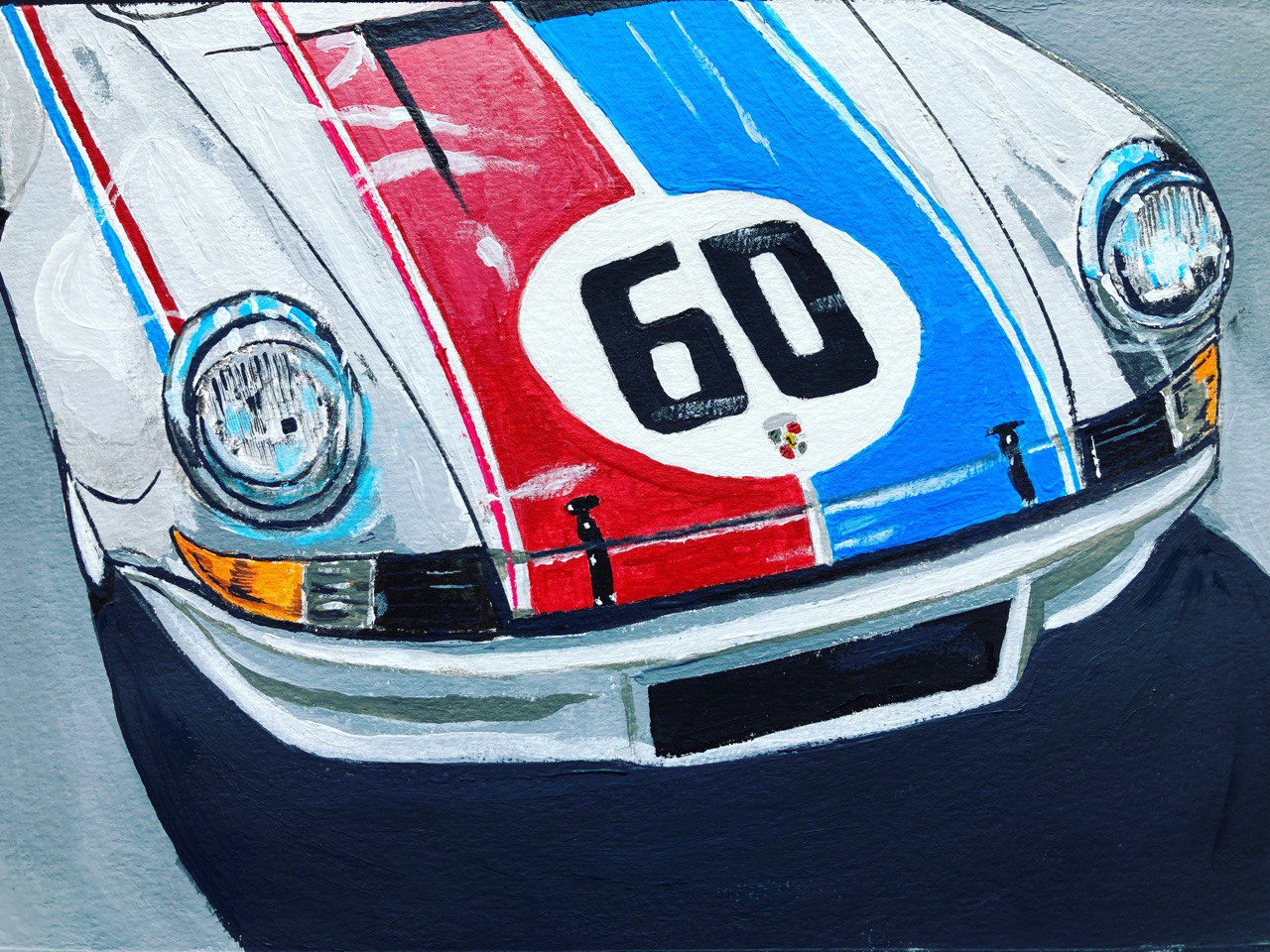
911 RS
Racing Success
The 1973 Porsche 911 Carrera RS proved to be immensely successful on the race track. It dominated various motorsport events, including winning the European GT Championship in 1973. The car’s lightweight construction, improved aerodynamics, and potent engine made it a formidable competitor against other sports cars of the era.
Paint Description
The paint aims a realistic painting with a classic and more vintage art style in genuine martini colors on this Porsche classic s.
Original painting: “Timeless Penn”
- Acrylic on Hahnemuehle paper 310gr/m²
- Size 24x32cm
- Year 2023
Historic narrative
Here’s the historic story behind the 911 Carrera RS:
-
Development and Purpose: In the early 1970s, Porsche aimed to compete in various motorsport events, including the European GT Championship and the legendary 24 Hours of Le Mans. However, to participate in these races, Porsche needed to produce a road-legal version of the 911 with significant improvements and performance enhancements. Thus, the 911 Carrera RS was born.
-
Lightweight Construction: To maximize performance, Porsche focused on reducing the weight of the car. They used thinner gauge steel for the body panels, aluminum for the engine lid, and lightweight glass for the windows. The result was a weight reduction of around 100 kilograms (220 pounds) compared to the standard 911.
-
Aerodynamic Enhancements: The 1973 Porsche 911 Carrera RS featured a distinctive “ducktail” rear spoiler, which not only improved high-speed stability but also provided additional downforce. The front spoiler and wider rear wheel arches were also incorporated to enhance aerodynamics and accommodate wider tires.
-
Engine and Performance: The 911 Carrera RS was powered by a 2.7-liter flat-six engine, which was lighter and more powerful than the standard 911 engine. In the touring version, it produced around 210 horsepower, while the sportier RS Lightweight variant delivered approximately 230 horsepower. The car was capable of accelerating from 0 to 60 mph in under six seconds and had a top speed of around 150 mph.
-
Limited Production: Porsche initially planned to produce only 500 units of the Carrera RS to meet homologation requirements. However, due to overwhelming demand, they eventually built over 1,500 units, including both touring and Lightweight versions. Today, the rarity and historical significance of the 1973 Carrera RS contribute to its desirability among collectors and enthusiasts.
-
Enduring Legacy: The 1973 Porsche 911 Carrera RS is widely regarded as one of the most desirable and collectible Porsches ever produced. Its combination of classic 911 styling, enhanced performance, and motorsport pedigree has made it an automotive icon. The success of the Carrera RS also paved the way for future performance-focused Porsche models, solidifying its place in the brand’s storied history.
The 1973 Porsche 911 Carrera RS remains an enduring symbol of Porsche’s commitment to performance and racing excellence. Its impact on the automotive world and its timeless design continue to captivate enthusiasts and inspire generations of car enthusiasts.